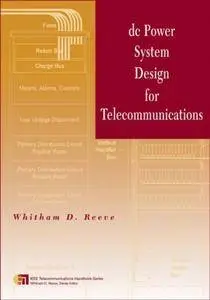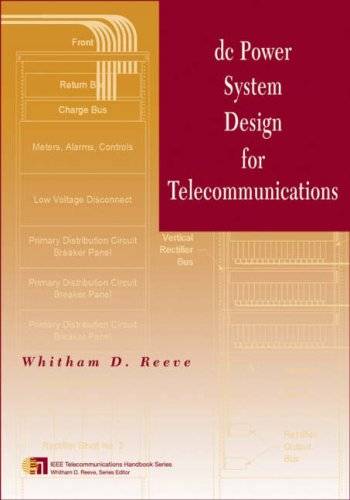Whitham D. Reeve, "DC Power System Design for Telecommunications"
2006 | pages: 512 | ISBN: 047168161X | PDF | 12,4 mb
2006 | pages: 512 | ISBN: 047168161X | PDF | 12,4 mb
Straightforward, systematic approach for designing reliable dc power systems for telecommunications
Here is a must-have resource for anyone responsible for designing, installing, and maintaining telecommunications systems. The text explains how to design direct current (dc) power systems that operate at nominal voltages of 24 and 48 volts dc, use lead-acid batteries, and are installed in public network telecommunications systems and other exclusive-use environments. Rather than train readers to design systems by rote, the author gives readers the skills and knowledge to perform systematic analyses to make the best choices based on several economic, operational, electrical, and physical considerations.
Written in a straightforward style that avoids unnecessary jargon and complex mathematics, the text covers all the essentials of dc power systems for telecommunications:
* Detailed descriptions of the seven major system components: Rectifier/charger System, Battery System, Charge Bus, Discharge Bus, Primary Distribution System, Secondary Distribution System, and Voltage Conversion System
* Detailed descriptions include design equations, reference tables, block diagrams, and schematics
* Design procedures to help readers select the most appropriate power system elements, such as buses, wiring, overcurrent protection, rectifiers, and batteries
* Application of the American National Standards Institute's telecommunications industry standards and other relevant standards, practices, and codes
* Strategies for dealing with voltage drop in distribution and battery circuits as well as guidance for sizing circuit wiring to meet voltage drop and current rating requirements
* In-depth discussions that focus on the types of lead-acid batteries used in telecommunications and their applications
Throughout the text, examples demonstrate how theory is applied to real-world telecommunications systems. Some 330 illustrations and more than 100 tables are also provided to help readers visualize and better understand complex systems. Design and application examples and accompanying solutions help readers understand the design process and use their new skills. In summary, engineers and technicians in the telecommunications industry will find all the resources they need to design reliable dc power systems.
My Link



